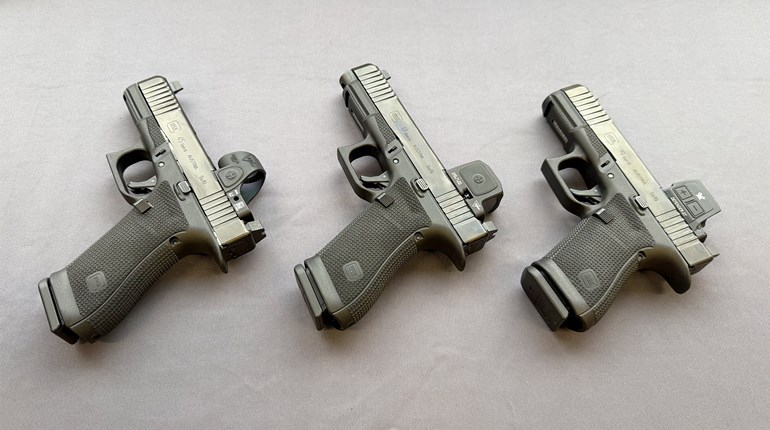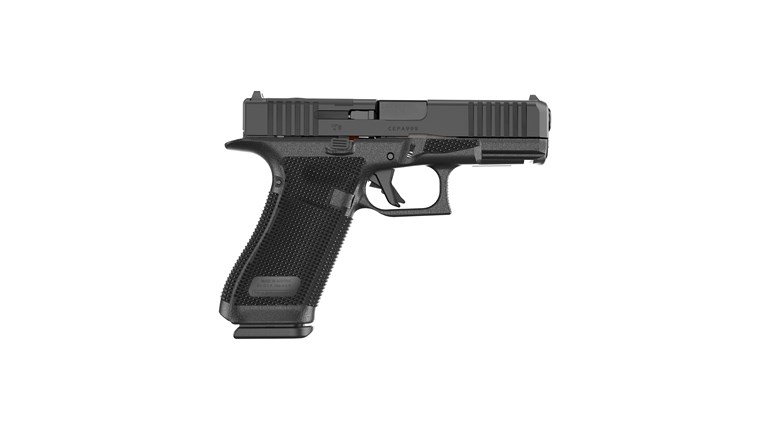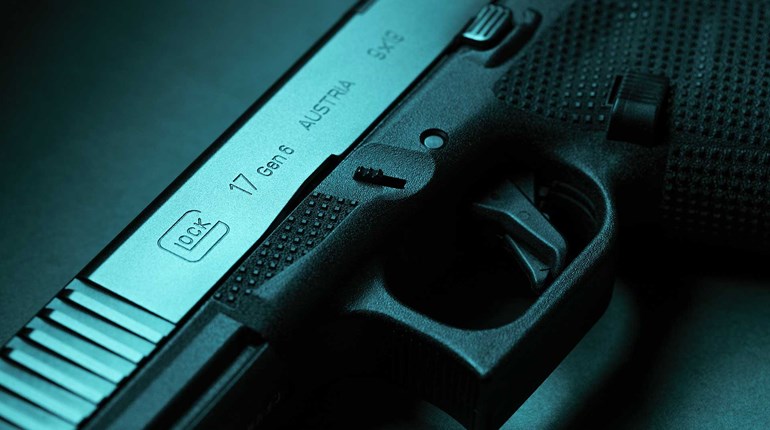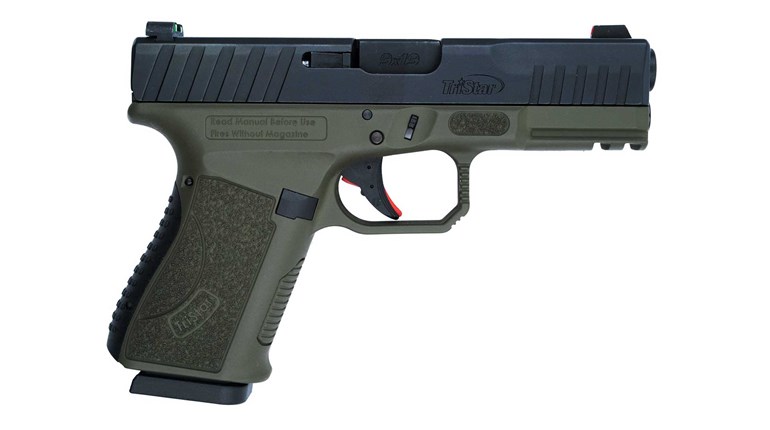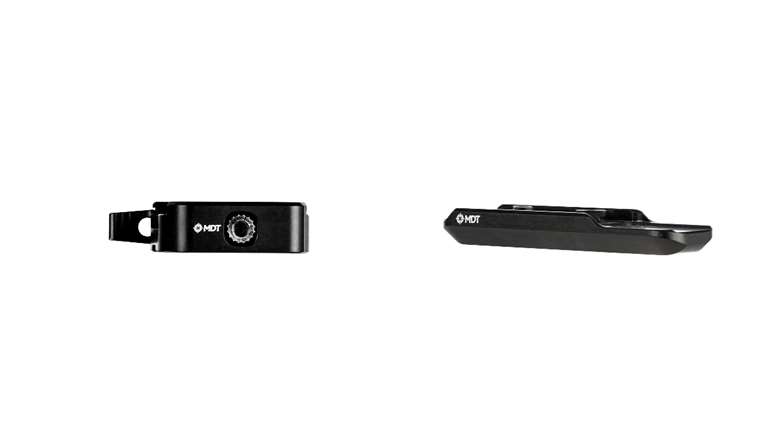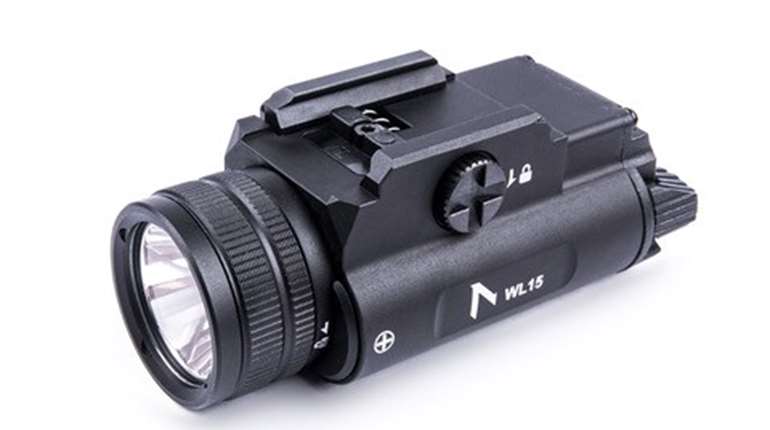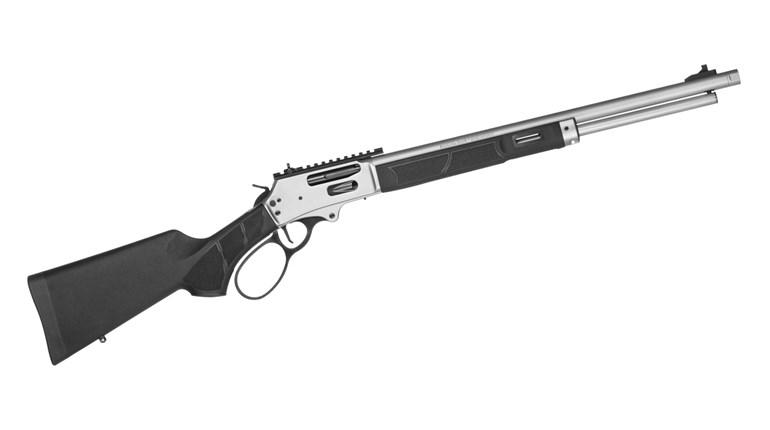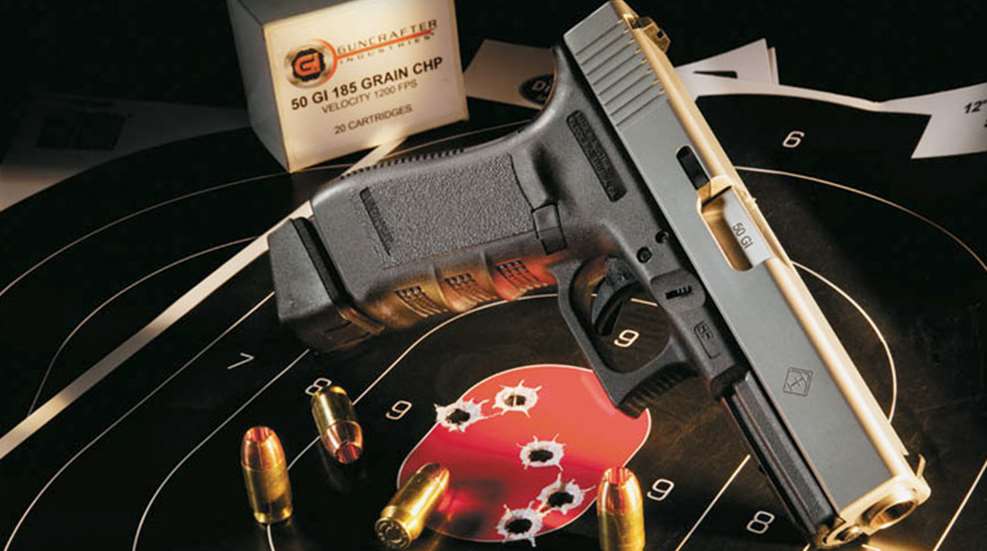
About six years ago, Alex Zimmerman decided to trump all of these caliber arguments by introducing the world to a .50-caliber pistol cartridge that would chamber in standard-framed guns. Up to this point there had been .5-inch-bore pistols, but none were of a practical size for duty or concealed carry.
Through his company, Guncrafter Industries, Zimmerman introduced the .50 GI Model No. 1 pistol. This was a custom-built 1911, chambered for the monster cartridge. The Model No. 1 was not a standard .45 ACP 1911 with a wider barrel—the entire pistol was built around the new cartridge. However, dimensions were similar enough to the old classic that holsters and magazine pouches for the original design worked.
Slowly but surely, word spread, and interest in the wide-mouth pistols began to build. American gun owners revel in the unique, and the .50 GI was definitely one-of-a-kind.

The Cartridge
As for cartridge specifics, the .50 GI fires a true .5-inch-diameter projectile. Bullet weights are available in 185, 230, 275 and 300 grains. Designs include a jacketed flat point, jacketed hollow point and a copper hollow point. The CHP projectiles are constructed completely of copper, have a deep cavity and are pre-cut for controlled expansion.
The .50 GI casing is actually a bit shorter than a .45 ACP case. As a rebated-rim case, the .50 GI case head mimics the .45. Overall length of the loaded .50 GI cartridge is also very close to the ACP version.
Despite using mammoth bullets, the .50 GI is actually a low-pressure cartridge. This pressure is easier on the brass, allowing it to be reloaded many times. Reloading die kits are available from Lee Precision and Hornady. As of this writing, ammunition is available exclusively through Guncrafter Industries.
Glock Conversion Unit
As the Model No. 1 and successive models are custom made in Guncrafter's shop, you can imagine the sticker price is commensurate with the amount of labor and material. In the common vernacular, they ain't cheap.During the last several years, Zimmerman spoke with potential customers who were excited about the .50 GI cartridge, but could not justify nearly $3,000 for a custom 1911. He and his team put their collective engineering heads together and came up with a solution.
Aside from the 1911, what pistol design is the most popular in the United States? Rhetorical question, I know. It's the Glock. Guncrafter Industries combined its monster .50 GI cartridge with a large-frame Glock pistol and viola, you have the .50 GI Conversion Kit.
The .50 GI Glock conversion unit will mount to any G20 or G21 frame. Simply remove the complete factory slide, barrel and recoil spring assembly and replace it with the .50 GI kit. The last piece of the puzzle is a specially designed, nine-round polymer magazine. With no gunsmithing, you can convert your 10 mm or .45 ACP Glock to .50 GI in less than 2 minutes.
When you purchase a conversion unit, the entire package arrives in a padded hard case. You receive a slide, barrel, recoil spring/guide combo and one magazine. Naturally, additional magazines are available for purchase.
The slide and barrel finish is matte stainless steel. Stock sights are Glock factory fixed style with the white dot up front and white U-shaped notch in the rear. As the sight channels are standard factory configuration, shooters can install any of the multitude of aftermarket sights that fit G20s or G21s.
Energized
How much energy is generated and delivered to the target is an important consideration in a defensive pistol. When considering the .50 GI cartridge, I ran the numbers for the light 185-grain CHP and the heavier 275-grain JHP.
Using the velocities determined by my chornograph, I plugged the numbers into the computer. According to the ballistic calculator hosted on www.handloads.com, the 185-grain CHP load produces 680 foot-pounds of energy and the 275-grain load 516 foot-pounds.
The difference is sizeable when compared to some of the most popular defensive handgun loads available. A 124-grain 9 mm JHP traveling at 1,100 fps produces 333 foot-pounds of energy. A .40 S&W bullet weighing 155 grains traveling at 1,150 fps generates 455 foot-pounds. And finally, a 230-grain .45 ACP bullet moving at 800 fps produces 327 foot-pounds of energy.
The .50 GI doesn't unseat the king of handgun energy, though. A 240-grain .44 Rem. Mag. bullet at 1,300 fps generates 901 foot-pounds.

Shooting the .50 GI Glock
For my range sessions, I took along all four of the previously mentioned factory loads. Running them over my Shooting Chrony F1 chronograph, I found average velocities were slightly above those listed on the packaging. That's a bit unusual, as most factory loads I test come in well below the numbers printed on the box.
Sitting down at the bench, I used a rolled-up range mat to rest my arms and wore a pair of CamelBak gloves to give me a secure grip and add just a bit of cushion. The targets stapled down range at 25 yards were black-and-white Birchwood Casey Dirty Birds. It was easy to see the .50-caliber holes as they appeared.
Taking my time and firing slowly and deliberately I was excited by the groups I saw. The mammoth bullets were clustering together very nicely. Many of the holes were touching. Keep in mind the .50 GI Conversion Kit is not a hand-tuned, custom instrument like the original Model No. 1, but a drop-in kit. As such, the recorded accuracy was tremendous.
I know the question on most of your minds is: What is the recoil like? I would equate the 275- and 300-grain loads to .45 ACP+P ammunition. The 185- and 230-grain CHP ammunition was a bit snappier, akin to firing a 10 mm pistol off the same frame.
During my range session, I also ran through dynamic drills. To test function, I loaded the pistol with all four loads, mixed some together and ran through shooting exercises.
It may not be much of a shocker, but I didn't have any failures or stoppages. The gun ran like a champ regardless of the ammunition I fed it. As you can imagine, .50 GI ammo is a bit pricey. Those .50-caliber bullets don't fall off trees. I had only about 150 rounds to fire. Such was my desire to give the gun a thorough workout that between my son and I, we burned through almost every round. The big gun ran admirably.
Parting Thoughts
Is the mammoth .50 GI for everyone? Of course not. But then, neither is a 10-gauge shotgun or big double rifle, like the .375 H&H Mag.
But if you've been looking for a big-bore equalizer capable of everyday carry, without suffering sticker shock, the .50-caliber performance of the Guncrafter Industries .50 GI Conversion Kit may be exactly what you've been seeking.
Manufacturer: Guncrafter Industries; (479) 665-2466,
Caliber: .50 GI
Capacity: 9+1
Barrel Length: 5 inches
Overall length: 7.6 inches
Weight: 28 ounces
Sights: Fixed
Finish: Matte stainless steel
MSRP: $595












